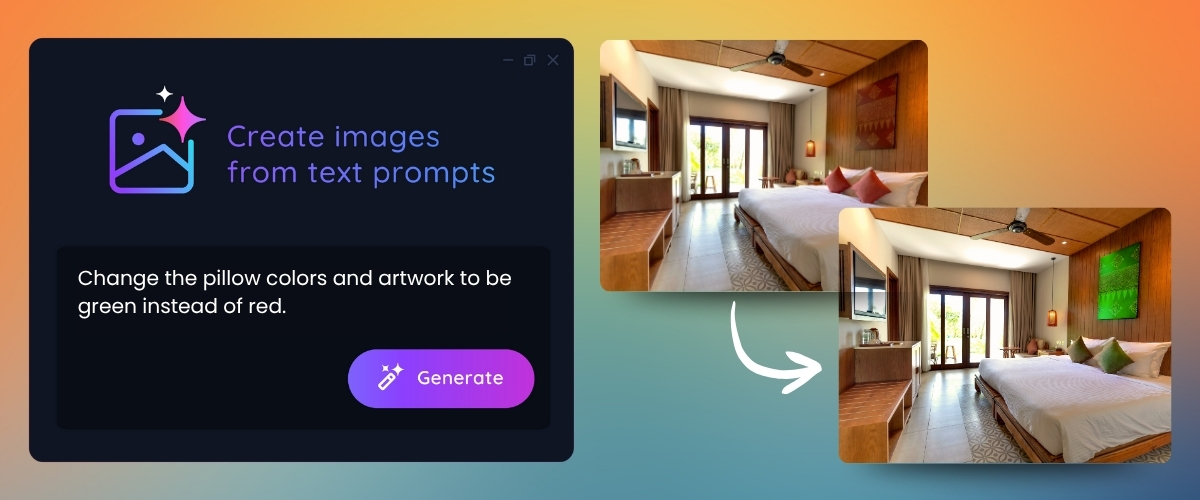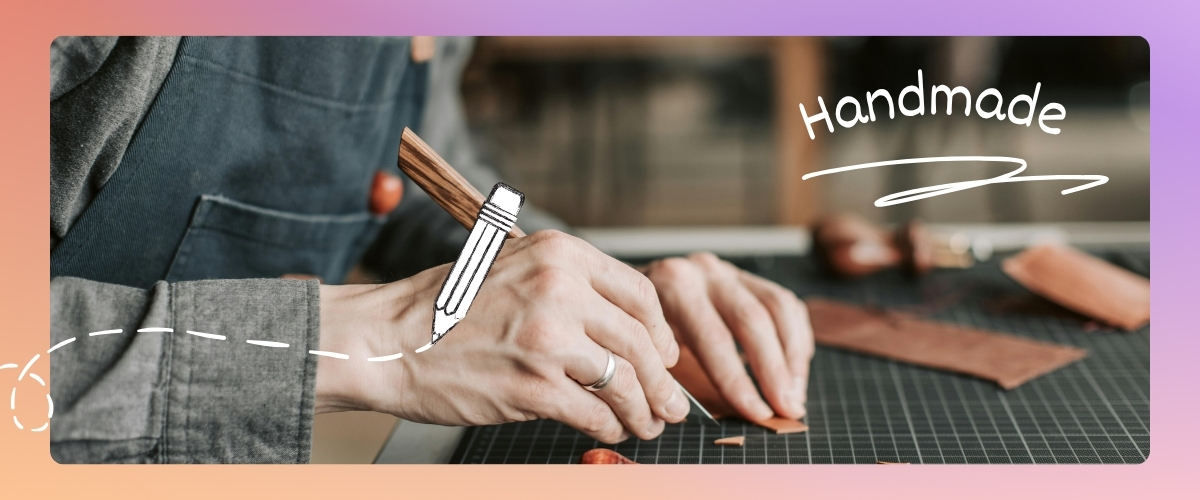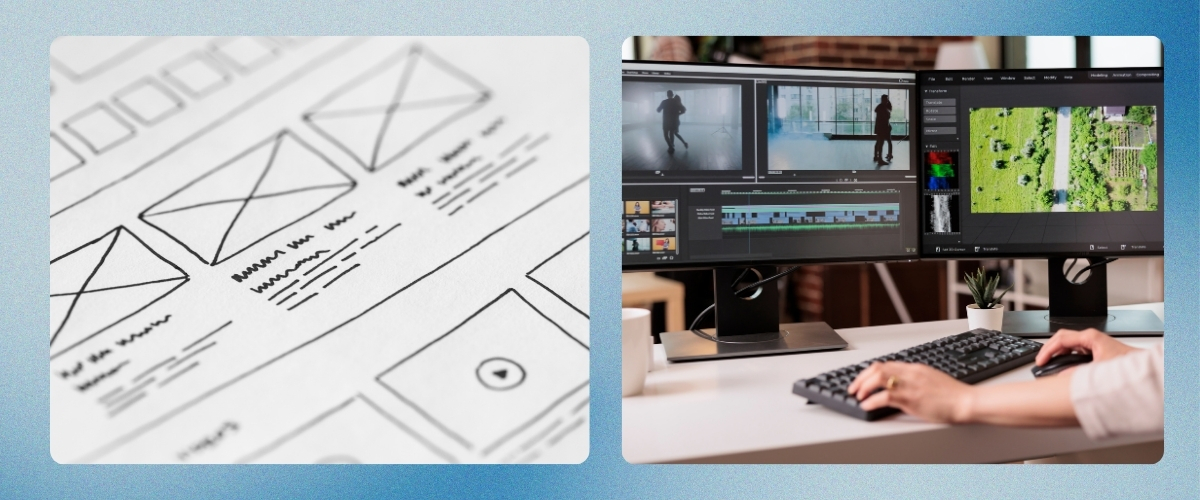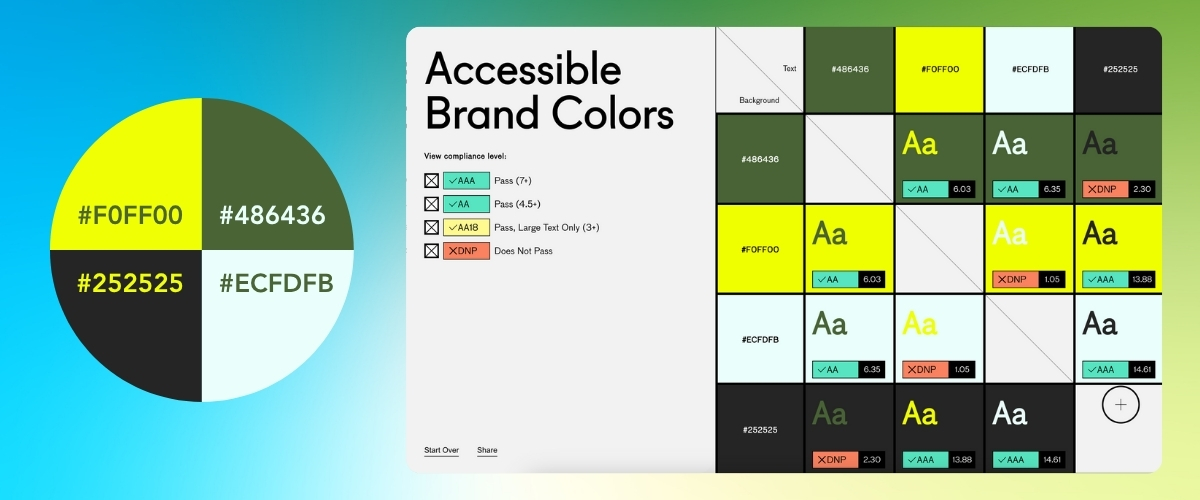At Mad Fish Digital, we’re constantly exploring what’s next in design, because what looks fresh and relevant today can feel dated by tomorrow. As we look ahead to 2026, we’re seeing clear shifts in how brands communicate visually. The future of design is about adaptability, emotion, and authenticity, all supported by smarter technology. Here’s our perspective on the trends shaping the next year of design marketing.
AI-Driven Creative
What began as designers experimenting with Midjourney prompts has evolved into a mainstream workflow. Since 2024, AI tools have moved from novelty to becoming notable parts of the creative process.
Designers can now use generative AI to produce on-brand imagery, concept art, social assets, and even interface elements, refining them within design suites like Adobe. Tools like Nano Banana and Canva AI allow designers to adjust visual style, composition, and color directly within their platform. It’s no longer just about moodboards or inspiration; it’s full-scale, production-ready visuals created in hours instead of weeks.
As AI-generated visuals become standard, ethical considerations are rising to the forefront. At Mad Fish Digital, we believe that speed and innovation shouldn’t come at the cost of transparency and integrity. Teams must ensure that AI tools are used responsibly by respecting copyright, protecting artist rights, and avoiding bias in training data that can perpetuate stereotypes or exclusion. Ethical design in the age of AI means being intentional: crediting sources and maintaining a human review process to safeguard authenticity. As AI reshapes how we create, it is first important to preserve human creativity.
Interested in learning more about ethical AI practices? Take a look at our Artificial Intelligence Policy.
Handcrafted Look & Feel
As AI-generated visuals become more polished and precise, a countertrend is emerging that embraces imperfection and handmade elements. Designers are bringing warmth back into digital spaces through sketches, irregular brush strokes, and tactile textures that mimic real materials like paper or paint. These subtle touches add humanity to an increasingly automated visual world.
This movement isn’t about rejecting technology but instead about restoring balance. The crisp precision of AI imagery can sometimes feel too sterile. Handcrafted details help reintroduce emotion into design. For brands, these design choices signal creativity, honesty, and approachability. A touch of imperfection, when intentional, can make a brand feel more real and relatable.
3D, Motion, and Immersive Video
Motion graphics, video, and 3D elements are powerful elements that can outperform static creatives. Whether through subtle interactions on a website or eye-catching product animations on social media, motion helps brands feel alive and modern.
Video is a powerful tool that can convey emotions and tell stories, making it particularly effective in building brand loyalty and trust while also providing a competitive advantage in today’s crowded digital landscape.
We’re also seeing more brands explore immersive formats like AR and interactive web design, turning digital spaces into experiences rather than just destinations. For designers, this shift means rethinking visual planning and designing not only for what people see, but for how they engage with your visuals.
The Retro Revival
Designs that evoke early digital aesthetics are quickly making a comeback across industries. Similar to handcrafted elements, retro elements often evoke warmth, comfort, and emotional connection.
This revival is showing up in bold color palettes, expressive typography, and playful layouts. Elements like vibrant gradients, grainy textures, and pixel art add energy and individuality in a bold and unexpected way.
For designers, the key is balance. Successful retro-inspired design doesn’t just copy the past, it reimagines it with modern elements. Using nostalgic elements alongside contemporary motion graphics and images creates an aesthetic that feels fresh. It is important to use nostalgia strategically: not to look backwards, but instead to remind audiences of how design can make them feel.
Design with Purpose: Sustainability and Inclusivity
Above all, design in 2026 will reflect values. More brands are approaching design through a lens of sustainability, accessibility, and inclusivity. This means choosing visuals that represent diverse audiences authentically, prioritizing accessible color contrasts and typography on websites, and even communicating environmental responsibility through design choices.
Inclusive, ethical design isn’t just good practice; it’s good business. A new study by PA Consulting found that 86% of consumers expect brands to play a ‘crucial role in driving positive change’, which is 12% higher than a year ago. As designers, it’s our responsibility to ensure that every creative decision, from color choice to image selection, reinforces that story of accountability.
Looking Ahead to 2026 and Beyond
2026’s design trends are all about crafting a new creative mindset. Nostalgic color palettes, dynamic typography, and handcrafted textures are only the surface of a deeper transformation: a shift in how design happens. Creative teams are moving away from rigid, one-off production cycles and embracing continuous iteration 0+by utilizing AI tools, analytics, and audience feedback to modify visuals in real time. Design is becoming a living and breathing process and a constant dialogue between brands and their audiences. It’s not just about keeping up with change; it’s about designing in motion, evolving alongside the people you serve.
Inspired by what’s next in design? Let’s talk about how we can bring these ideas to life for your brand.






